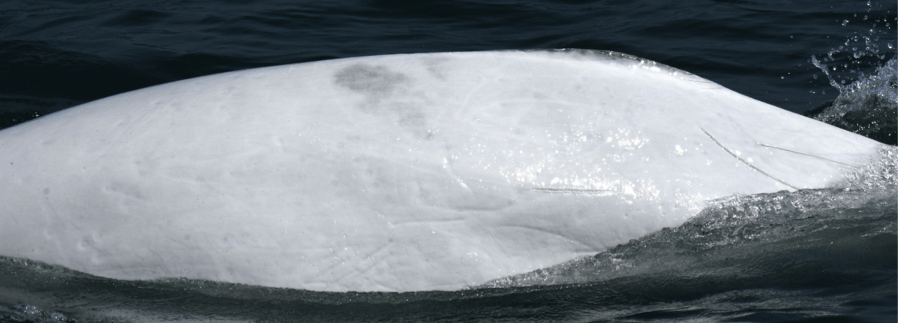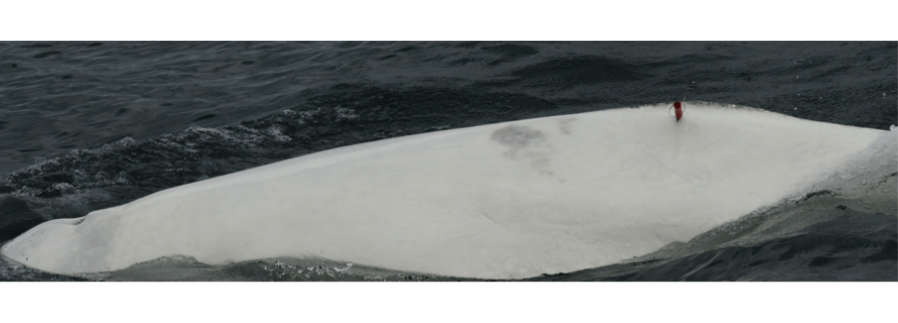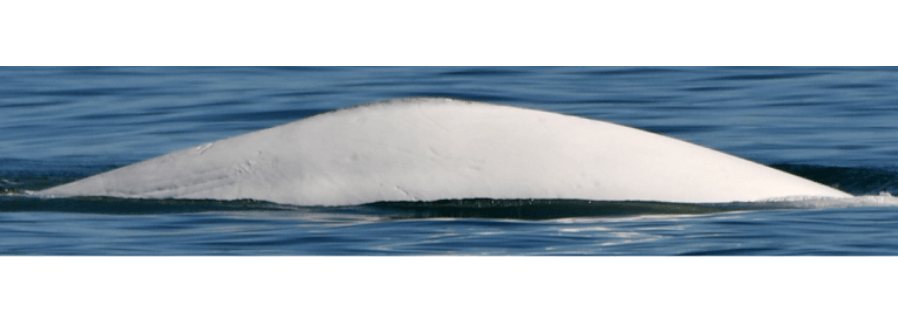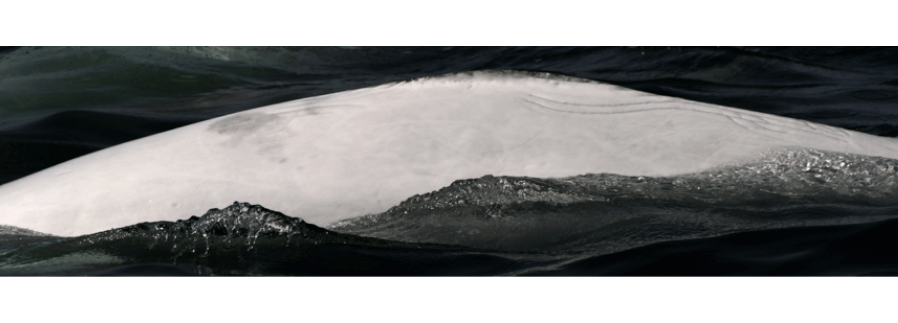Écol’eau
Beluga


Adopted by Fonds plein air 1% pour la planète – Aventure Écotourisme Québec
-
ID number
DL9051
-
Sex
Male
-
Year of birth
Circa 2000
-
Known Since
2015
Distinctive traits
It’s hard not to notice the large grey patch in front of the dorsal ridge on DL9051’s left flank. This individual also has several notches in its ridge.
His story
The young DL9051 was first photographed by our team in 2015. At the time, its skin was still slightly grey. Belugas change colour with age and turn completely white between the ages of 12 and 16. Ever since our encounter with DL9051 in 2016, it has been completely white. We therefore estimate that this beluga was born around the year 2000.
To uncover the genetic secrets of DL9051, on September 25, 2016, we took a tiny sample of skin and fat called a biopsy. Amongst other things, this analysis revealed that DL9051 is a male.
DL9104 is observed in groups of various composition. Belugas have a varied social life and don’t only associate with animals of the same sex or the same age. However, there is a form of sexual segregation in the species, especially in summer, when bulls and cows live separately and frequent different territories. Three male networks are known, two of which ply the waters of the Saguenay and the head of the Laurentian Channel while the third one, nicknamed the “Downstream Boys”, uses the head of the Laurentian Channel as well as the downriver portion of the Estuary. When they reach adulthood, males tend to form stable groups of companions. These associations, which are established gradually in adulthood, may play an important role in belugas’ reproductive lives. Even if their territories overlap, individuals from one network seldom come into contact with males of other networks. Until now, DL9104 has generally been observed on the south side of the Estuary. But as he is still young, will his preferred “stomping grounds” change over time?
How DL9051’s story unfolds will teach us volumes on the evolution of belugas’ social lives. For example, which sector will he favour as he grows older? Who will his lifelong companions be? By better understanding how belugas live, we will be able to better protect them.
How his story unfolds will help us better understand the social lives of belugas. By better understanding how belugas live, we will be able to better protect them.
Observations history in the Estuary
Years in which the animal was not observed Years in which the animal was observed
Sponsor
Le Fonds plein air 1% pour la planète – Aventure Écotourisme Québec adopted Écol’eau (2021).





